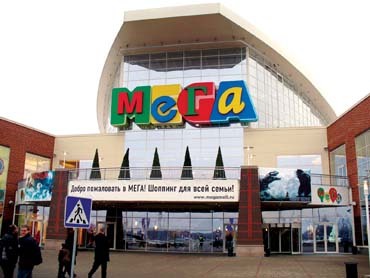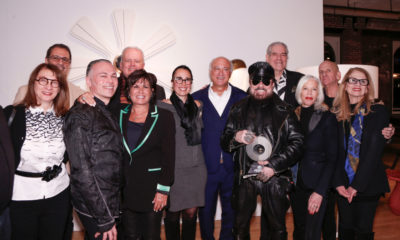Vodka, blinis, paranoia, long winters and maybe the mafia. This is the very outdated image of Russia that many cling to.
Of course, all of it can still be found in one form or another (certainly the winters – and therefore the vodka). But depending on such a narrow set of criteria does the world's largest nation a severe disservice.
How big is Russia? Consider that if you were to board a plane in Moscow, you'd arrive in New York sooner than you would in Vladivostock on Russia's Pacific seaboard (the name itself means “far east”). The country's nascent retail sector is growing fast. But, owing to sheer scale, it remains, for the most part, a series of regional concerns.
There is also the matter of population distribution. An overwhelming majority of Russia's 143 million people live in the big cities, and most of these are in the western part of the country.
For retailers, this has meant putting down roots in Moscow and St. Petersburg, the old capital that looks increasingly like a western European city with all the usual branded suspects.
Scandinavia has been hugely instrumental in opening up the Russian market for retailers. IKEA now has four stores in Moscow alone. (London, where IKEA has been active for more than 20 years, still has just three outlets.) IKEA is a perfect fit for this market. The average metropolitan Russian's newfound financial enfranchisement means that demand for design-based home products is soaring.
But IKEA country manager Peter Partma makes the point that the legendary Russian mafia has not once been a problem for IKEA and, although bureaucracy can be difficult, things do get done.
Advertisement
IKEA is not the only big-box retailer to make an impact on product-hungry Russia. The Germans and French have both been in the market for a while. Auchan is a French hypermarket and Obi a German DIY operator. To date, Auchan has chosen to restrict its activities to the Moscow region, the size of a medium-sized U.S. state, where it has six stores. Both Auchan and Obi have taken store formats developed in the home country and more or less dumped them in the Steppes. It is working for now, but as more foreign entrants set up shop, local adaptations may prove necessary.
So far, this has been a story of non-Russian retailers conducting a Klondike-like stampede to gain first-mover advantage. But there are also a good number of homegrown chains. Pharmacy chain 36.6 (the temperature in Celsius of a healthy human body) has grown in a short time from being an essentially Muscovite operation, with store interiors created by London-based design consultancy SCG, to a national chain operating in 11 of Russia's 13 biggest cities (all with populations over 1 million).
Company spokesman Mikhail Kolosov says that the 380-store chain has plans to have 1000 by 2008, passing the annual billion-dollar-sales hurdle. Like IKEA, 36.6 has manufacturing operations in Western Russia, choosing not to burden itself with expensive and lumbering import supply chains.
The same is true of beauty retailer L'Etoile, which has 190 stores in 49 Russian regions and also owns the franchise to run Sephora shops in Russia. This is that rare beast – a coast-to-coast operation. General director Alexandra Ushkova says that in its eighth year of operation, it has learned what is required in the regions: “Every city has its own habits, its own customs. They are like separate countries and you have to treat them differently.”
There are also the markets that differentiate the retail scene. Russia was, until recently, a place where shoppers were accustomed to going to an outdoors market and haggling. These still hold sway over the purchasing power of many Russians. That said, walk into the recently opened $250 million Mega Mall on the outskirts of Moscow and you could be in Milan or New York or Paris – the same fascias, the same mall walkers. Truly, the world is a smaller place these days.
John Ryan is stores editor of Retail Week, a U.K.-based publication, and VM+SD's European editor. He will offer insights into the latest European retail trends at the upcoming International Retail Design Conference, September 6-8, in San Francisco. For more information, go to www.irdconline.com .
Advertisement


 Photo Gallery6 days ago
Photo Gallery6 days ago
 Headlines2 weeks ago
Headlines2 weeks ago
 Headlines6 days ago
Headlines6 days ago
 Headlines1 week ago
Headlines1 week ago
 Headlines2 weeks ago
Headlines2 weeks ago
 Headlines7 days ago
Headlines7 days ago
 Designer Dozen2 weeks ago
Designer Dozen2 weeks ago
 Special Reports2 weeks ago
Special Reports2 weeks ago














